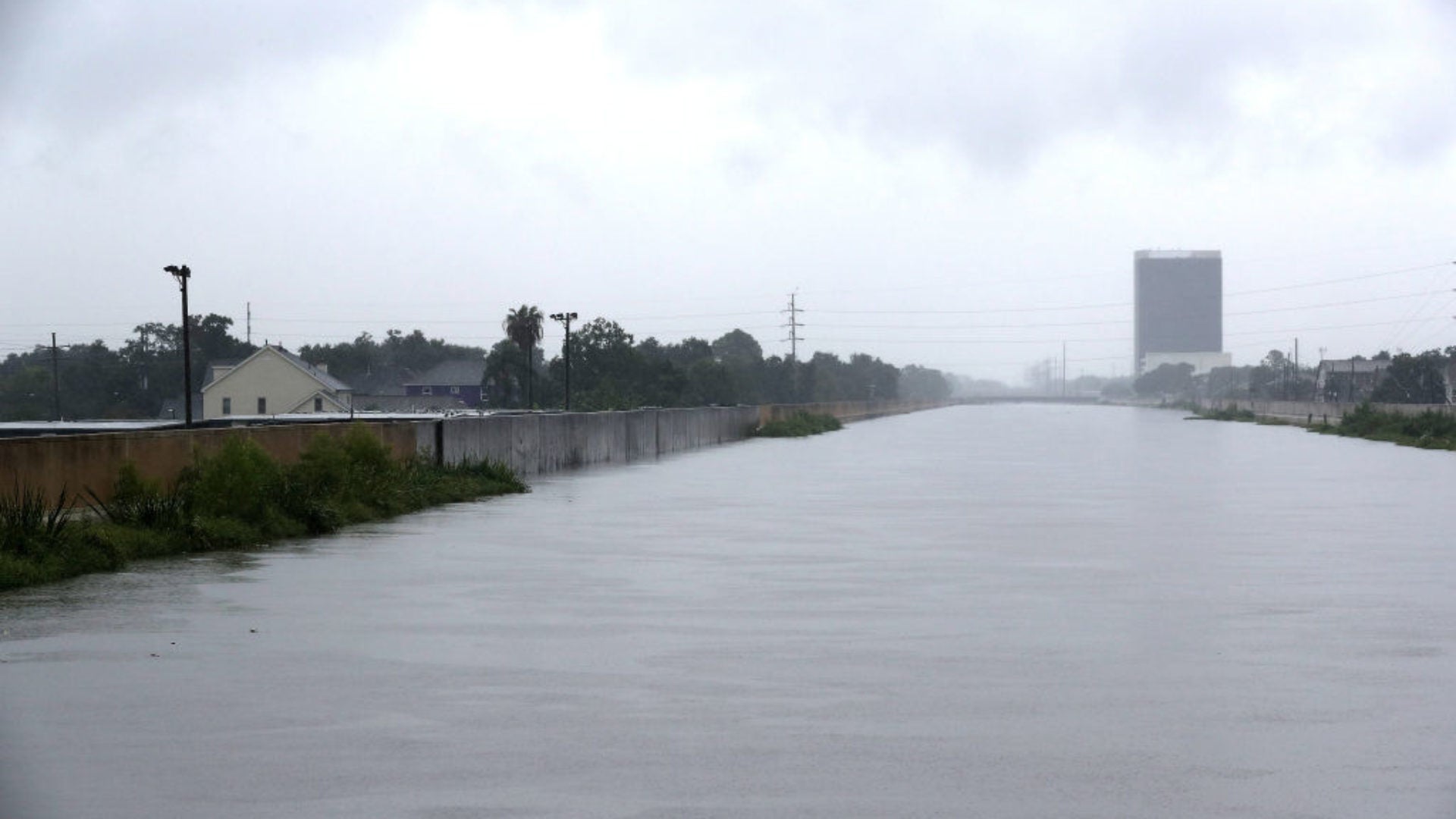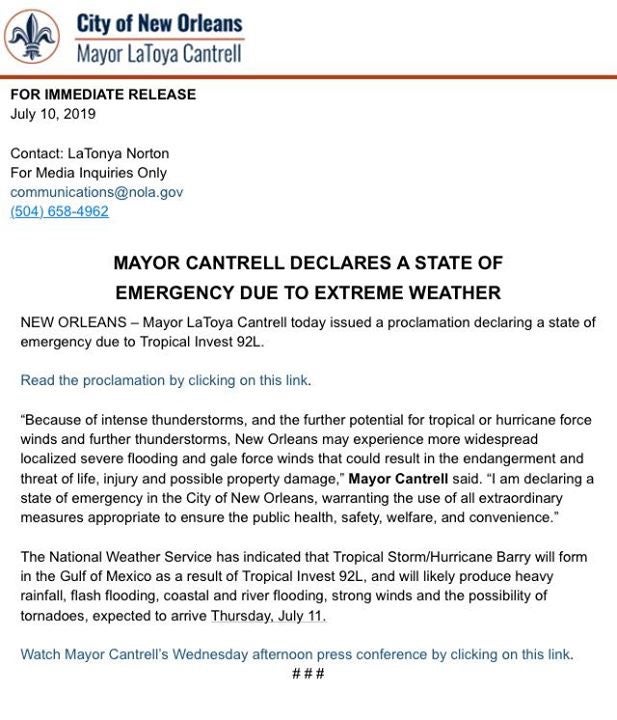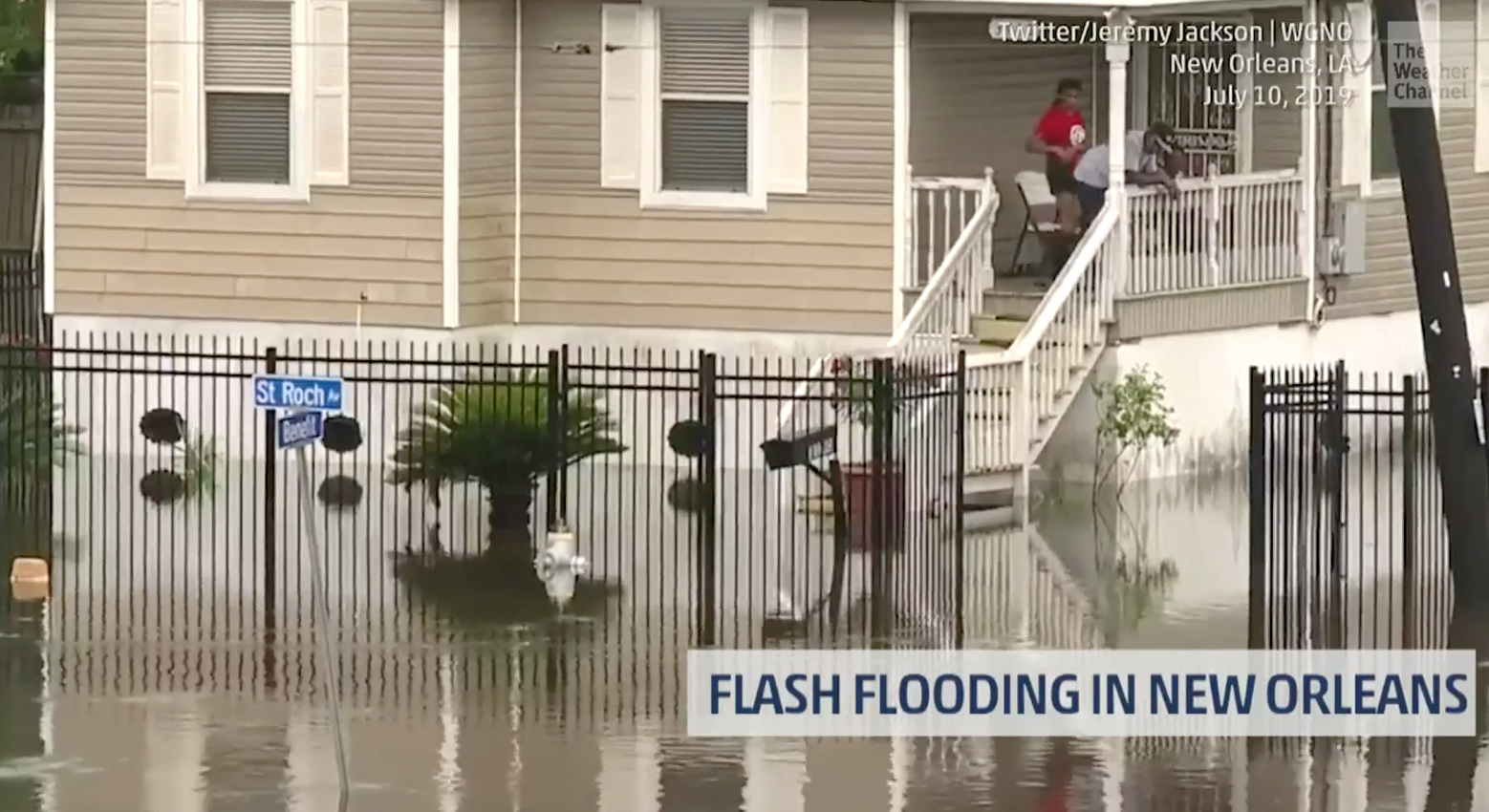
UPDATE: 7/11/19 – 10:41 a.m. ET -Tropical Storm Barry, which officially formed Thursday morning in the Gulf of Mexico, is expected to hit the Gulf Coast as a Category 1 hurricane on Saturday, the National Hurricane Center announced.
Louisiana Gov. John Bel Edwards declared a state of emergency yesterday, warning that the “entire coast of Louisiana is at play in this storm.” Edwards has not yet made a decision on opening up evacuation centers, the Advocate reports.
“This is going to be a very significant weather event. It would be, in and of itself, but if you look at the fact that we got the elevated Mississippi River and we’ve had more rainfall in Louisiana over the last several months than normal, you know that it makes it much harder to deal with events of this type,” Edwards said.
Up to 15 inches of rain are expected in the Miss-Lou on Friday and Saturday. As ESSENCE previously reported, with expectations of the Mississippi River rising to 20 feet, flood waters could spill over the lowest sections of the levee, “something that has never happened in the city’s modern history.”
UPDATE: 7/10/19 – 3:30 p.m. CT —New Orleans Mayor Latoya Cantrell has declared a state of emergency in the Crescent City due to what is now being called Tropical Invest 92L, the Mayor’s Office announced this afternoon.
Read Mayor Cantrell’s statement below:
Today, I issued a proclamation declaring a state of emergency due to Tropical Invest 92L.
Read the proclamation on nola.gov.
Because of intense thunderstorms, and the further potential for tropical or hurricane force winds and further thunderstorms, New Orleans may experience more widespread localized severe flooding and gale force winds that could result in the endangerment and threat of life, injury and possible property damage. I am declaring a state of emergency in the City of New Orleans, warranting the use of all extraordinary measures appropriate to ensure the public health, safety, welfare, and convenience.
The National Weather Service has indicated that Tropical Storm/Hurricane Barry will form in the Gulf of Mexico as a result of Tropical Invest 92L, and will likely produce heavy rainfall, flash flooding, coastal and river flooding, strong winds and the possibility of tornadoes, expected to arrive Thursday, July 11.

Earlier:
As Potential Tropical Cyclone Two continues to pound New Orleans, Louisiana, with rain and flooding, residents brace for the storm to be upgraded to Tropical Storm Barry, and to possibly make landfall as Hurricane Barry this weekend.
The Atlantic hurricane season officially began June 1, but if Tropical Storm Barry continues to form over the Gulf of Mexico—and is eventually upgraded to Hurricane Barry—it would be the first major hurricane of the season.
If Hurricane Barry makes landfall, it is expected to be at Category 1 and carry maximum winds of 85 mph, the National Hurricane Center said Wednesday. But warmer temperatures lead to warmer waters, so the power and path of the storm is unpredictable.

Massive rainfall, flash-flooding, and storm surges are already pummeling the city, including the famed French Quarter. According to NOLA.com, “the official flood stage in New Orleans is 17 feet, but a combination of recently elevated earthen levees and floodwalls on both sides of the river in the New Orleans area protect to water heights of between 20 and 22 feet.”
Still, with expectations of the Mississippi River rising to 20 feet, flood waters could spill over the lowest sections of the levee, “something that has never happened in the city’s modern history,” NOLA.com reports.
The fear that the levees won’t hold stems from very real trauma. Katrina slammed into New Orleans as a Category 3–downgraded from a Category 5–monster of a hurricane that barreled down the Gulf Coast and made landfall in the early-morning hours of Aug. 29, 2005.
“The Storm,” as Katrina is often called, decimated the Crescent City, leaving an estimated 80 percent of it underwater after the faulty levees broke. Entire neighborhoods in New Orleans were destroyed, primarily in predominantly Black communities, leaving 70 percent of all occupied housing units severely damaged or uninhabitable. The total property and infrastructure damage along the Gulf Coast reached $135 billion.
Approximately 1,836 people died because of Katrina—1,577 in Louisiana, 238 in Mississippi, 14 in Florida, two in Alabama, two in Georgia. According to the Data Center, an estimated 1,000 of those deaths were in New Orleans.
Houston, Texas, has also been placed on alert for potential Hurricane Barry. The National Hurricane Center predicts that the tropical storm currently forming and wreaking havoc will “eventually strengthen enough to become Hurricane Barry before landfall on Saturday and the Houston-Galveston area remains on the western edge of the Center’s cone of uncertainty,” the Houston Press reports.
Houston is still in recovery from Hurricane Harvey, which made landfall on August 17, 2017. The Category 4 storm caused an estimated 107 deaths in the United States, and an estimated $125B in property and infrastructure damage—tying Hurricane Katrina for costliest natural disaster.
ESSENCE sends love to New Orleans, our home away from home, and the entire Gulf Coast as we wait out the storm.
This story will be updated.
